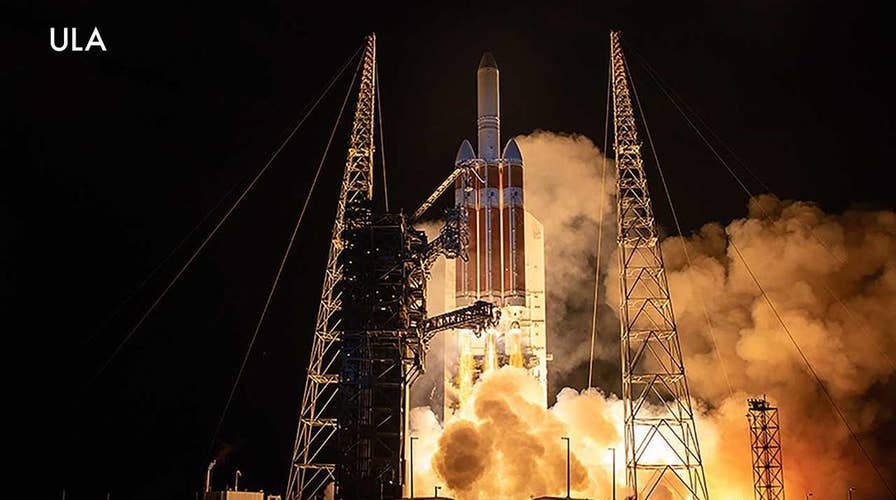NASA's Parker Solar Probe blasts off on its mission to the Sun
NASA's Parker Solar Probe blasts off from Cape Canaveral on its mission to the Sun.
NASA’s Parker Solar Probe has clinched the record for closest approach to the Sun by a man-made object, the space agency confirmed Monday.
Scientists calculated that the spacecraft surpassed the current record of 26.55 million miles from the Sun's surface at about 1:04 p.m. EDT Monday. The previous record was set in April 1976 by the Helios 2 spacecraft.
“It’s been just 78 days since Parker Solar Probe launched, and we’ve now come closer to our star than any other spacecraft in history,” said Parker Solar Probe Project Manager Andy Driesman, of the Johns Hopkins Applied Physics Laboratory, in a statement.
NASA'S PARKER SOLAR PROBE SNAPS EARTH PIC AS IT SPEEDS TO THE SUN
Late on Monday, the probe was also expected to break the record for fastest spacecraft traveling relative to the Sun. At about 10:54 p.m. EDT, Parker is expected to surpass the record for heliocentric speed, which is 153,454 mph, set by Helios 2 in April 1976.
Parker blasted off on its odyssey atop a United Launch Alliance Delta IV Heavy rocket in the early hours of Aug. 12, 2018.
The $1.5 billion mission will take humanity closer to the Sun than ever before. Parker will be the first spacecraft to fly through the Sun’s corona, the outermost part of the star’s atmosphere. It is expected to arrive at the Sun in November.
To withstand the heat of nearly 2,500 degrees Fahrenheit, the probe is protected by a special 4.5-inch-thick carbon-composite shield.
UNITED LAUNCH ALLIANCE PREPS FOR THE RETURN OF MANNED SPACE MISSIONS FROM CAPE CANAVERAL
Parker will face “brutal” heat and radiation during the epic journey that will take it to within 3.83 million miles of the Sun’s surface, according to the space agency. This is seven times closer than the previous closest spacecraft, Helios 2, which came within 27 million miles of the Sun in 1976.
Harnessing Venus’ gravity, Parker will complete seven flybys over seven years to gradually bring its orbit closer and closer to the Sun. On its closest approach in 2024, the probe will be traveling at approximately 430,000 mph, setting a new speed record for a manmade object.
The probe will begin its first solar encounter on Oct. 31. It will reach its first perihelion, or point closest to the Sun, at about 10:28 p.m. EST on Nov. 5, according to NASA.
Correction: An earlier version of this story said that Parker Solar Probe was launched atop an Atlas V rocket. This has been changed to Delta IV Heavy rocket.
The Associated Press contributed to this article.
Follow James Rogers on Twitter @jamesjrogers





















